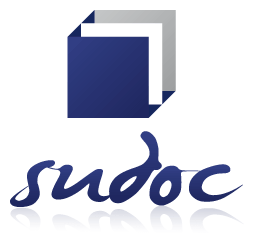TELETRABAJO: UNA REVISIÓN INTEGRATIVA DE LA LITERATURA INTERNACIONAL
UNA REVISIÓN INTEGRATIVA DE LA LITERATURA INTERNACIONAL
DOI:
https://doi.org/10.19094/contextus.v17i3.42743Palabras clave:
teletrabajo; teletrabajo; trabajo en casa; formas flexibles de trabajo; revisión integradoraResumen
El objetivo fue analizar la producción científica disponible en bases de datos internacionales sobre teletrabajo, para verificar el volumen de producción e identificar el foco de estudio de los artículos, a través de la revisión integradora. La producción científica está creciendo, con una gran cantidad de artículos de revisión (12). En cuanto a los artículos empíricos, con un enfoque predominantemente cuantitativo, existe una baja publicación en las organizaciones públicas. Estados Unidos y el Reino Unido encabezan el ranking de publicaciones, así como la lista de los artículos más citados. El enfoque de los estudios está en la búsqueda de impactos causados por la implementación del teletrabajo al trabajador y la organización. Se identifica que existen pocos estudios de naturaleza longitudinal y pocos que combinen los diversos actores involucrados en el teletrabajo, especialmente en relación con los equipos de trabajo.
Citas
ABDULLAH, H.; ISMAIL, N. Quality of work and life balance in teleworking. International Business Management, v. 6, n. 2, p. 119-130, 2012.
ADERALDO, I. L.; ADERALDO, C. V. L.; LIMA, A. C. Aspectos críticos do teletrabalho em uma companhia multinacional. Cadernos EBAPE. BR, v. 15, n. 3, p. 511-533, 2017.
AGUILERA, A. et al. Home-based telework in France: Characteristics, barriers and perspectives. Transportation Research Part A: Policy and Practice, v. 92, p. 1-11, 2016.
ANSONG, E.; BOATENG, R. Organisational adoption of telecommuting: Evidence from a developing country. The Electronic Journal of Information Systems in Developing Countries, v. 84, n. 1, p. e12008, 2018.
ARAÚJO, C. A. Bibliometria; evolução histórica e questões atuais. Em Questão, v. 12, n. 1, p. 11-32, jan./jun., 2006.
BAILEY, D. E.; KURLAND, N. B. A review of telework research: Findings, new directions, and lessons for the study of modern work. Journal of Organizational Behavior: The International Journal of Industrial, Occupational and Organizational Psychology and Behavior, v. 23, n. 4, p. 383-400, 2002.
BAYRAK, T. IT support services for telecommuting workforce. Telematics and informatics, v. 29, n. 3, p. 286-293, 2012.
BÉLANGER, F. Workers’ propensity to telecommute: An empirical study. Information & Management, v. 35, n. 3, p. 139-153, 1999.
BÉLANGER, F.; WATSON-MANHEIM, M. B.; SWAN, B. R. A multi-level socio-technical systems telecommuting framework. Behaviour & Information Technology, v. 32, n. 12, p. 1257-1279, 2013.
BOTELHO, L. L. R.; CUNHA, C. C. D. A.; MACEDO, M. O método da revisão integrativa nos estudos organizacionais. Gestão e Soc., v. 5 n. 11, p. 121-36, 2011.
CAMPBELL, J.; HEALES, J. Factor Structure of Individual Consequences for Teleworking Professionals. Australasian Journal of Information Systems, v. 20, 2016.
COENEN, M.; KOK, R. A. W. Workplace flexibility and new product development performance: The role of telework and flexible work schedules. European Management Journal, v. 32, n. 4, p. 564-576, 2014.
COLLINS, A. M.; HISLOP, D.; CARTWRIGHT, S. Social support in the workplace between teleworkers, office‐based colleagues and supervisors. New Technology, Work and Employment, v. 31, n. 2, p. 161-175, 2016.
CONTRERAS, O. E.; ROZO ROJAS, I. Teleworking and business sustainability. A reflection from the Human Resource Management in Colombia. Suma de negocios, v. 6, n. 13, p. 74-83, 2015.
COOKE, G.; CHOWHAN, J.; COOPER, T. Dialing it in: A Missed Opportunity Regarding the Strategic Use of Telework?. Relations industrielles/Industrial Relations, v. 69, n. 3, p. 550-574, 2014.
CORDEIRO, A. M., OLIVEIRA, G. M. D., RENTERÍA, J. M., GUIMARÃES, C. A. Revisão sistemática: uma revisão narrativa. Rev. Col. Bras. Cir, v. 34, n. 6, p. 428-431, 2007.
DA COSTA, I. S. A. Teletrabalho: subjugação e construção de subjetividades. Revista de Administração Pública, v. 41, n. 1, p. 105-124, 2007.
DA SILVA, J. A. Flexibility and telework: a study about scientific production analysis. Perspectivas em Ciência da Informação, v. 19, n. 2, p. 159-173, 2014.
DUTCHER, E. G. The effects of telecommuting on productivity: An experimental examination. The role of dull and creative tasks. Journal of Economic Behavior & Organization, v. 84, n. 1, p. 355-363, 2012.
DUXBURY, L.; NEUFELD, D. An empirical evaluation of the impacts of telecommuting on intra-organizational communication. Journal of Engineering and Technology Management, v. 16, n. 1, p. 1-28, 1999.
FELDMAN, D. C.; GAINEY, T. W. Patterns of telecommuting and their consequences: Framing the research agenda. Human Resource Management Review, v. 7, n. 4, p. 369-388, 1997.
FROLICK, M. N.; WILKES, R. B.; URWILER, R. Telecommuting as a workplace alternative: an identification of significant factors in American firms’ determination of work-at-home policies. The Journal of Strategic Information Systems, v. 2, n. 3, p. 206-220, 1993.
GOLDEN, T. D. Avoiding depletion in virtual work: Telework and the intervening impact of work exhaustion on commitment and turnover intentions. Journal of vocational behavior, v. 69, n. 1, p. 176-187, 2006.
GROEN, B. A. C. et al. Managing flexible work arrangements: Teleworking and output controls. European Management Journal, v. 36, n. 6, p. 727-735, 2018.
HADDON, L.; BRYNIN, M. The character of telework and the characteristics of teleworkers. New Technology, Work and Employment, v. 20, n. 1, p. 34-46, 2005.
HAU, F.; TODESCAT, M. Teleworking in the perception of teleworkers and their managers: advantages and disadvantages in a case study. NAVUS-REVISTA DE GESTAO E TECNOLOGIA, v. 8, n. 3, p. 37-52, 2018.
HAZAN, B. F.; MORATO, A. D. P. Teleworking in Brazilian law: grounds, perspectives and changes promoted by labor reform. Lex Humana, v. 10, n. 1, p. 1-24, 2018.
HIDALGO, A.; ALBORS, J. Innovation management techniques and tools: a review from theory and practice. R&D Management, v. 38, n. 2, p. 113-127, 2008.
HILL, E. J.; FERRIS, M.; MÄRTINSON, V. Does it matter where you work? A comparison of how three work venues (traditional office, virtual office, and home office) influence aspects of work and personal/family life. Journal of Vocational Behavior, v. 63, n. 2, p. 220-241, 2003.
HUNTON, J. E.; NORMAN, C. S. The impact of alternative telework arrangements on organizational commitment: insights from a longitudinal field experiment (retracted). Journal of Information Systems, v. 24, n. 1, p. 67-90, 2010.
ILLEGEMS, V.; VERBEKE, A. Telework: what does it mean for management?. Long Range Planning, v. 37, n. 4, p. 319-334, 2004.
ILLEGEMS, V.; VERBEKE, A.; S’JEGERS, R. The organizational context of teleworking implementation. Technological forecasting and social change, v. 68, n. 3, p. 275-291, 2001.
KATZ, A. I. The management, control, and evaluation of a telecommuting project: A case study. Information & Management, v. 13, n. 4, p. 179-190, 1987.
KOSSEK, E. E.; LAUTSCH, B. A.; EATON, S. C. Telecommuting, control, and boundary management: Correlates of policy use and practice, job control, and work–family effectiveness. Journal of Vocational Behavior, v. 68, n. 2, p. 347-367, 2006.
KUGELMASS, J. Teletrabalho: novas oportunidades para o trabalho flexível. São Paulo: Atlas, 1996.
KURLAND, N. B.; COOPER, C. D. Manager control and employee isolation in telecommuting environments. The Journal of High Technology Management Research, v. 13, n. 1, p. 107-126, 2002.
LEE, H.; SHIN, B.; HIGA, K. Telework vs. central work: A comparative view of knowledge accessibility. Decision Support Systems, v. 43, n. 3, p. 687-700, 2007.
MARUYAMA, T.; HOPKINSON, P. G.; JAMES, P. W. A multivariate analysis of work–life balance outcomes from a large‐scale telework programme. New Technology, Work and Employment, v. 24, n. 1, p. 76-88, 2009.
MOKHTARIAN, P. L.; SALOMON, I. Modeling the desire to telecommute: The importance of attitudinal factors in behavioral models. Transportation Research Part A: Policy and Practice, v. 31, n. 1, p. 35-50, 1997.
NEIROTTI, P.; PAOLUCCI, E.; RAGUSEO, E. Telework configurations and labour productivity: some stylized facts. International Journal of Engineering Business Management, v. 4, n. Godište 2012, p. 4-5, 2012.
NILLES, J. M. Traffic reduction by telecommuting: A status review and selected bibliography. Transportation Research Part A: General, v. 22, n. 4, p. 301-317, 1988.
PÉREZ, M. P.; SÁNCHEZ, A. M.; CARNICER, M. P. L. Benefits and barriers of telework: perception differences of human resources managers according to company’s operations strategy. Technovation, v. 22, n. 12, p. 775-783, 2002.
PETERS, P.; TIJDENS, K. G.; WETZELS, C. Employees’ opportunities, preferences, and practices in telecommuting adoption. Information & Management, v. 41, n. 4, p. 469-482, 2004.
ROCHA, C. T. M.; AMADOR, F. S. O teletrabalho: conceituação e questões para análise. Cadernos EBAPE. BR, v. 16, n. 1, p. 152-162, 2018.
ROSENFIELD, C. L.; DE ALVES, D. A. Autonomy and information work: telework. Dados, v. 54, n. 1, p. 207-233, 2011.
SOLÍS, M. Moderators of telework effects on the work-family conflict and on worker performance. European Journal of Management and Business Economics, v. 26, n. 1, p. 21-34, 2017.
SULLIVAN, C.; LEWIS, S. Home‐based telework, gender, and the synchronization of work and family: perspectives of teleworkers and their co‐residents. Gender, Work & Organization, v. 8, n. 2, p. 123-145, 2001.
TEO, T. S. H.; LIM, V. K. G.; WAI, S. H. An empirical study of attitudes towards teleworking among information technology (IT) personnel. International journal of information management, v. 18, n. 5, p. 329-343, 1998.
TREMBLAY, D. Organização e satisfação no contexto do teletrabalho. Revista de Administração de Empresas, v. 42, n. 3, p. 54-65, 2002.
TREMBLAY, D.; THOMSIN, L. Telework and mobile working: analysis of its benefits and drawbacks. International Journal of Work Innovation, v. 1, n. 1, p. 100-113, 2012.
TUNG, L. L.; TURBAN, E. Information technology as an enabler of telecommuting. International Journal of Information Management, v. 16, n. 2, p. 103-117, 1996.
VAN DEN BROEK, D.; KEATING, E. Rights to a process for the masses or select privileges for the few? Telework policy and labour market inequality in Australia. Policy Studies, v. 32, n. 1, p. 21-33, 2011.
VAN SELL, M.; JACOBS, S. M. Telecommuting and quality of life: a review of the literature and a model for research. Telematics and Informatics, v. 11, n. 2, p. 81-95, 1994.
VARGAS, A. V.; OSMA, J. I. P. Proposal for implementing a telecommuting model/Propuesta de implementación de un modelo de teletrabajo. RISTI (Revista Ibérica de Sistemas e Tecnologias de Informação), n. 12, p. 17-32, 2013.
VITTERSØ, J. et al. Impacts of home-based telework on quality of life for employees and their partners. Quantitative and qualitative results from a European survey. Journal of Happiness Studies, v. 4, n. 2, p. 201-233, 2003.
WOJCAK, E. et al. How to achieve sustainable efficiency with teleworkers: Leadership model in telework. Procedia-Social and Behavioral Sciences, v. 229, p. 33-41, 2016.
WORKMAN, M.; KAHNWEILER, W.; BOMMER, W. The effects of cognitive style and media richness on commitment to telework and virtual teams. Journal of Vocational Behavior, v. 63, n. 2, p. 199-219, 2003.
Descargas
Publicado
Cómo citar
Número
Sección
Licencia
Os autores, no ato da submissão, aceitam a declaração abaixo:
Nós autores mantemos sobre nosso artigo publicado os direitos autorais e concedemos à revista Contextus o direito de primeira publicação, com uma licença Creative Commons na modalidade Atribuição – Não Comercial 4.0 Internacional, a qual permite o compartilhamento com reconhecimento da autoria e da publicação inicial nesta revista.
Temos ciência de estarmos autorizados a assumir contratos adicionais separadamente, para distribuição não exclusiva da versão do trabalho publicada nesta revista (ex.: publicar em repositório institucional ou como capítulo de livro), também com reconhecimento tanto da autoria, quanto da publicação inicial neste periódico.
Atestamos que o artigo é original ou inédito, não foi publicado, até esta data, em nenhum periódico brasileiro ou estrangeiro, quer em português, quer em versão em outra língua, nem está encaminhado para publicação simultânea em outras revistas.
Sabemos que o plágio não é tolerado pela revista Contextus e asseguramos que o artigo apresenta as fontes de trechos de obras citadas, incluindo os de qualquer trabalho prévio produzido e publicado pelos próprios autores.









3.png)


1.jpg)



1.jpg)


1.jpg)






.jpg)



1.jpg)

1.jpg)


1.jpg)

1.jpg)
1.jpg)
2.png)




1.jpg)
2.jpg)

1.jpg)





1.jpg)


1.jpg)
1.jpg)
